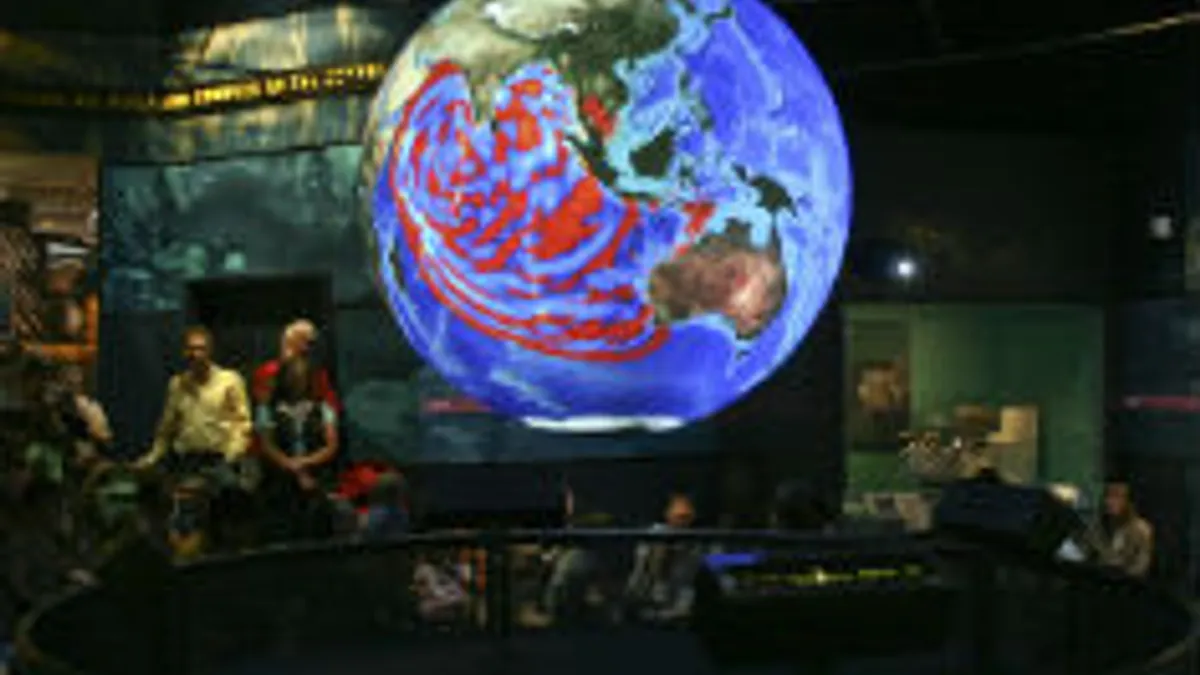Virtual field trips provide an appealing solution for schools with limited budgets who still want their students to get out-of-classroom experiences.
Educators and Web developers are constantly finding new solutions for bringing visual technology to educational settings. The results are more than just sight seeing tours—they are interactive experiences in which students can further engage in their schoolwork and lessons.
E-missions and Real World Math, for starters, are examples of virtual field trips in which students not only see distant locations but also solve problems within them. Education Dive looked at both of them, as well as a host of other options that teachers can look to to make far-off locations a little closer to home:
1. GOOGLE LIT TRIPS
Where it goes: Across the Aegean with Odysseus; from Afghanistan to America with Amir of The Kite Runner
On Google Lit Trips, teachers can share custom made tours from the real-world settings of books commonly taught in school using Google Earth's tour-creation option. While taking the virtual trips, students follow the journey of the book's protagonist and are given information and questions at landmarks along the way.
2. E-MISSIONS
Where it goes: The Amazon, Mars and even the scene of a hurricane
E-Missions offers virtual emergency scenarios for students to act as a response team. To prevent a disaster, students have to perform the necessary calculations as new data is received live from Mission Control at the Challenge Learning Center of Wheeling Jesuit University. All missions are adapted to fit current educational standards and resources are provided to prepare students beforehand.
3. SMITHSONIAN
Where it goes: National Museum of Natural History
The Smithsonian offers a virtual tour of the Museum of Natural History in its entirety. Exhibitions past and present are viewable in browser, desktop and mobile formats. The panoramic camera features rotating and zooming features within each exhibition.
4. 360 CITIES
Where it goes: Anywhere in the world from snowy mountain tops to deep sea coral reefs
360 Cities contains the Internet's largest collection of uploaded panoramic images. Students can have access to navigable views of cities, natural landscapes and much more. The site also offers tools for people to create their own panoramas.
5. TRADITIONS OF THE SUN
Where it goes: Ancient Native American Observatories
Offering an in-depth view of ancient Mesoamerican beliefs, Traditions of the Sun is an online virtual tour of Native American observatories dedicated to tracking the movements of the sun. Maps of the Yucatan and Chaco canyon regions are available with landmarks dotted across them for pictures, panoramic views and information. While the website's theme is centered on the role of the sun in Mesoamerican life, it provides visual material on architectural sites that served a variety of functions.
6. UPM FOREST LIFE
Where it goes: A Forest in Finland
UPM Forest Life is an interactive resource for learning about the many uses of the forest. Students can take a virtual tour of featured sections of Harviala forest in Finland and click on highlighted asterisks to learn more about tree species, vulnerable areas and human activity. Complete with audio and visual effects, UPM Forest Life is both a highly informative and immersive way to learn about the importance of forest environments.
7. GLOBAL NOMADS GROUP
Where it goes: Classrooms around the world
Teachers seeking to connect their students to children in classrooms thousands of miles away can do so with Global Nomads Group. The website uses videoconferencing technology to allow large meetings between classes to take place. These meetings concern important issues facing the world today and the location of the class is dependent on the topic being discussed. By creating international connections, Global Nomads Group aims at promoting dialogue on far-reaching issues between young people in different countries.
8. VC CONTENT PROVIDER DATABASE
Where it goes: Around the world, through history and outer space
VC Content is a search engine for educational video conferences. Its large database consists of video conference programs on a wide range of subjects ranging from personal finance to Civil War art. Many of these programs require payment, but VC Content provides a list of free, high quality options as well.
9. REAL WORLD MATH
Where it goes: A coordinate plane over Greenland; the fractal coastline of England
Math practice comes alive in Real World Math's Google Earth lessons. These lessons aim to teach math in a fully applicable way, using Google Earth to create problems that require the use of real world geographical reference points. A few of the types of problems offered by Real World Math include calculating volumes, measuring distances and determining exchange rates.
10. GOOGLE ART PROJECT
Where it goes: Art museums around the world
The Google Art Project has acquired art collections from dozens of galleries and museums around the world for internet browser viewing. Instead of taking a field trip to a museum, students can see the art of many museums while still in the classroom. The Project also has user-created galleries, which teachers can use to create themed presentations of artwork from different collections.
Want to see more education news and resources like this in your inbox on a daily basis? Subscribe to the Education Dive email newsletter! You may also want to read our "8 digital textbook competitors" list and follow Education Dive on Twitter.



















